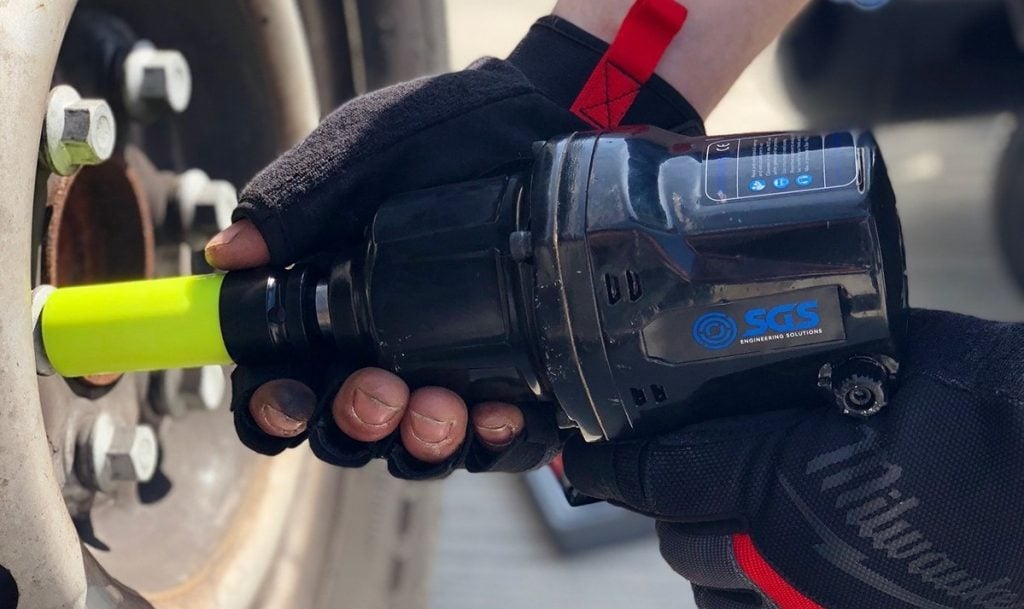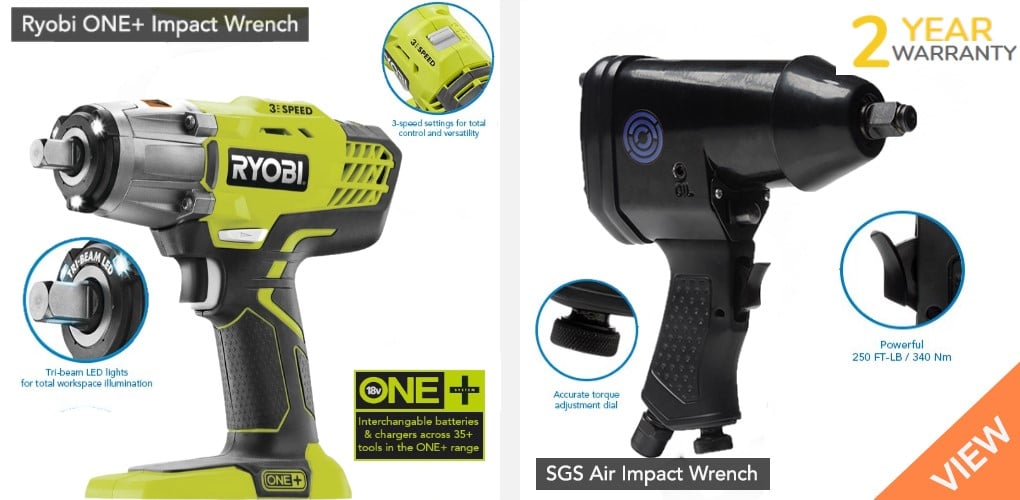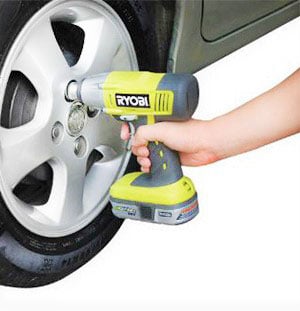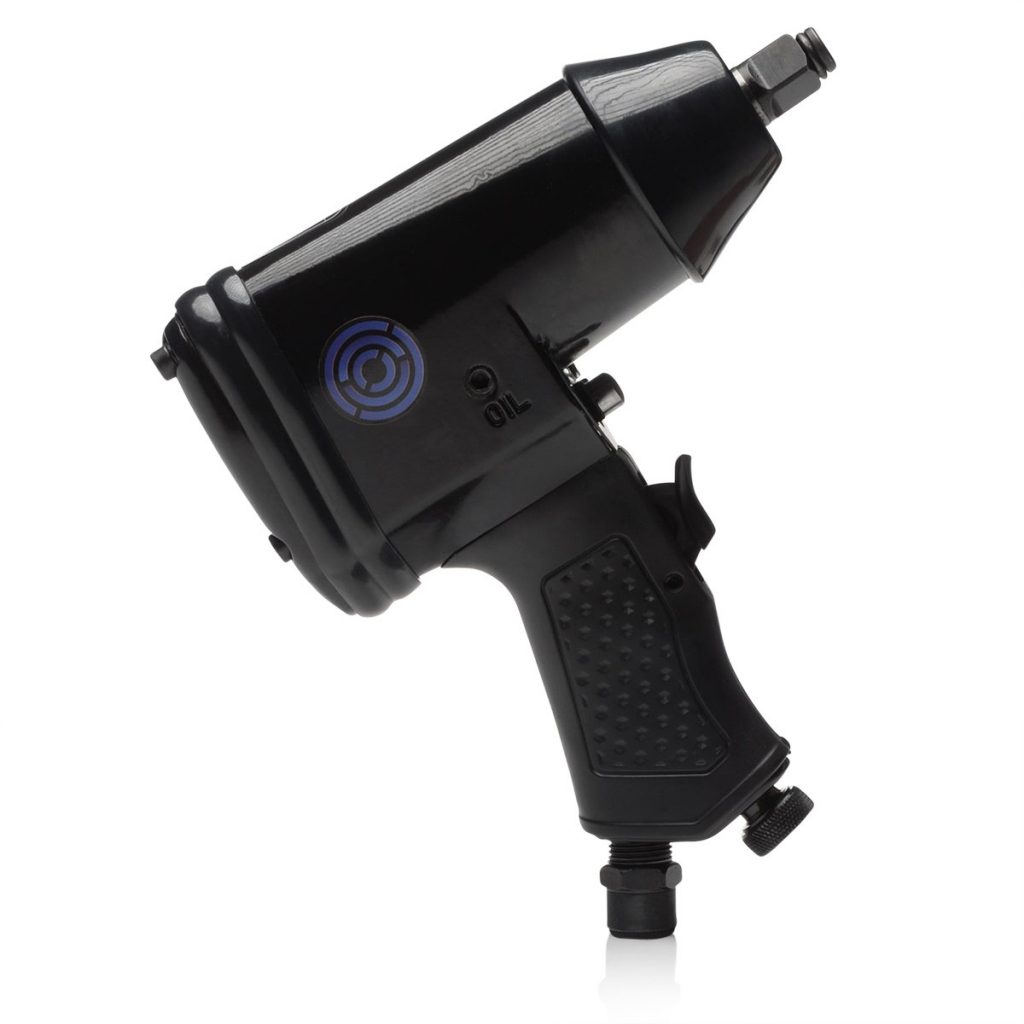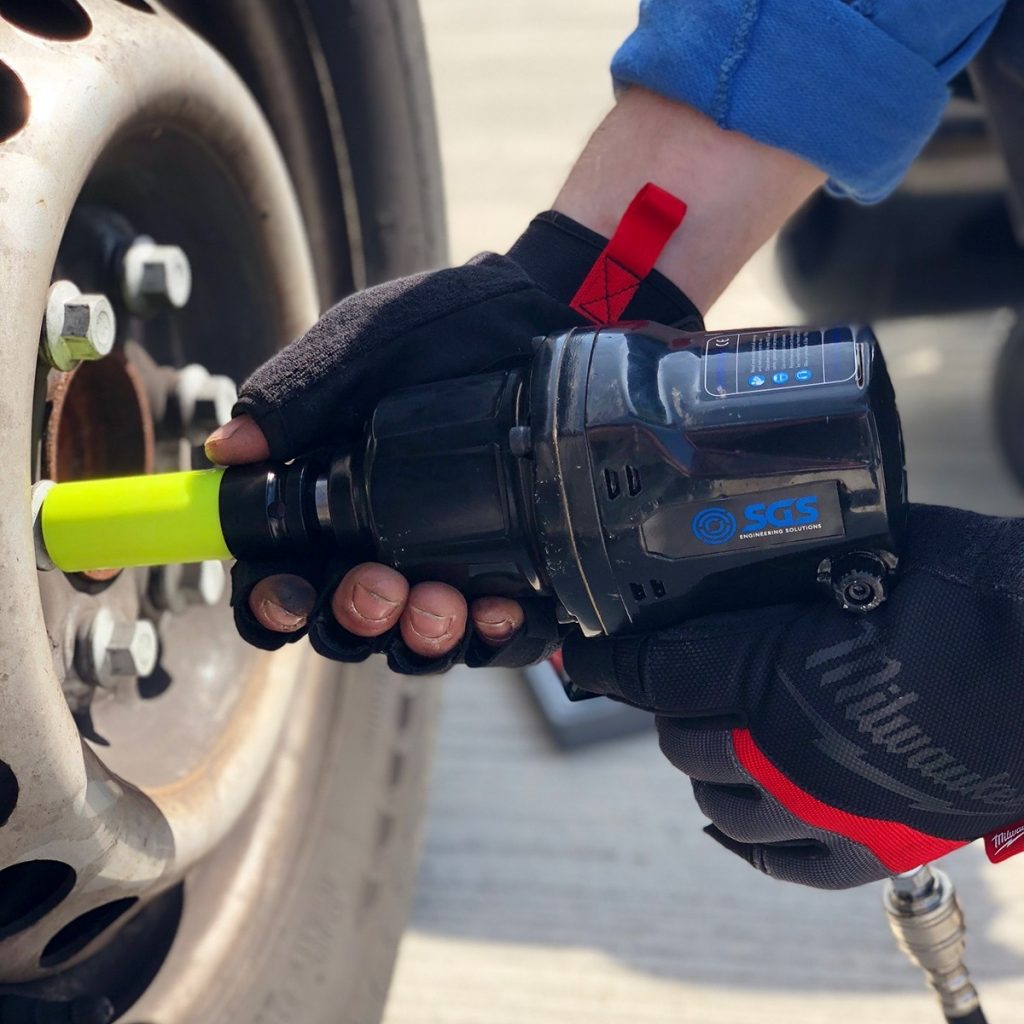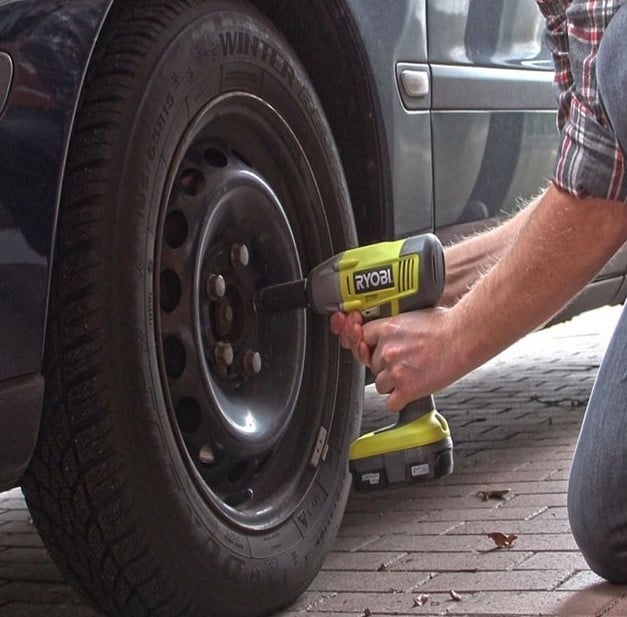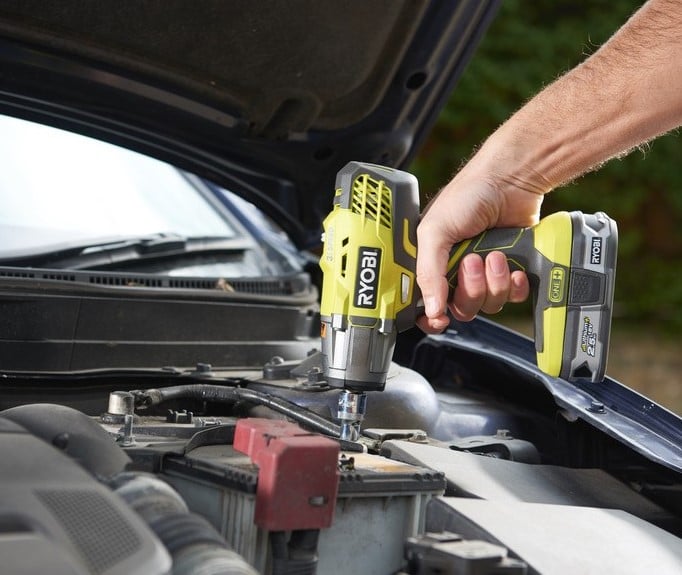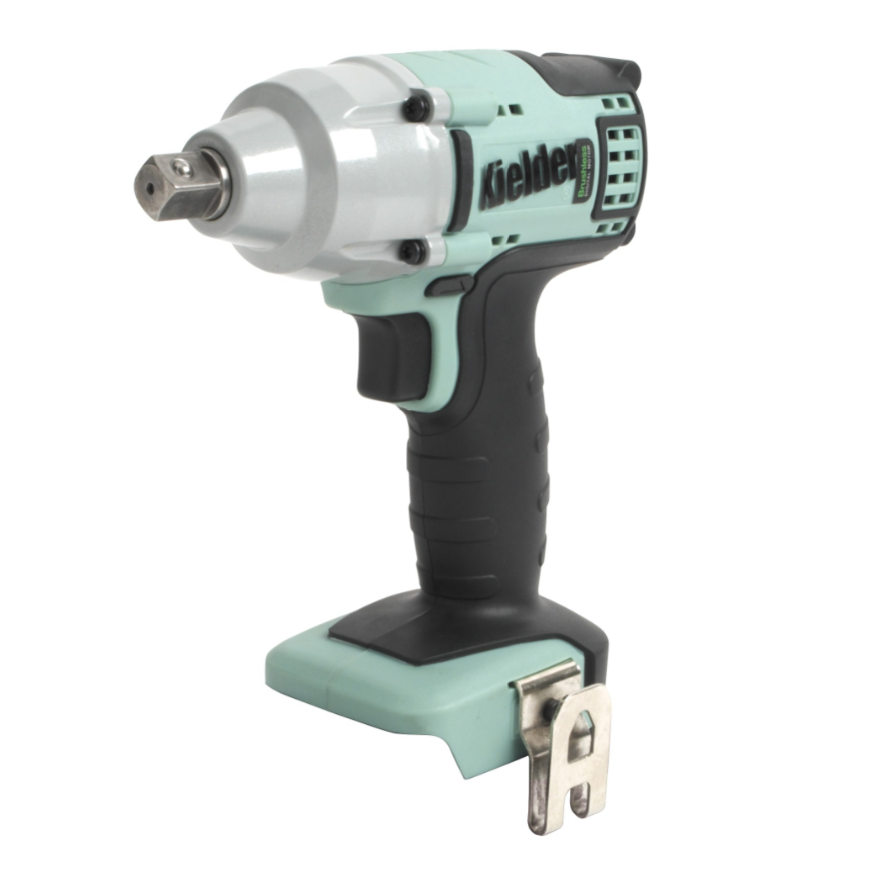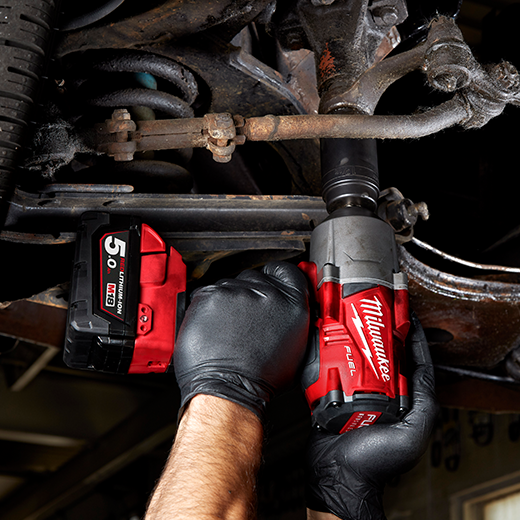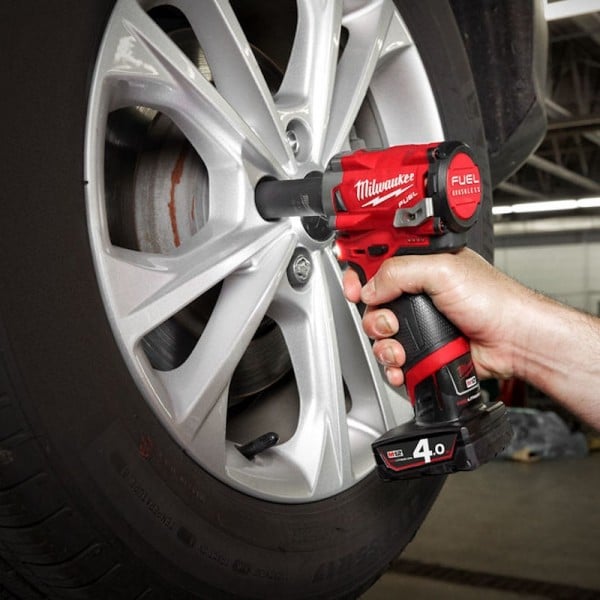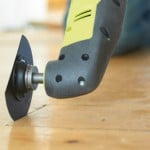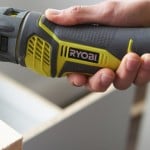Impact Wrench Guide: Which impact wrench should I buy?
An impact wrench can prove incredibly useful for successfully completing a wide range of tasks – from home DIY projects to car repairs or other bits of work. In some cases, it can even be an essential tool to get the job done. So, it’s important that you’re able to find one that’s right for your project. At SGS Engineering, we can help with your search thanks to our extensive choice of air-powered and cordless impact wrenches – with options to suit every task and budget.
Not sure which impact wrench is the one you need? Don’t know what an impact wrench is used for? We’re here to help with that too. We’ve put together this handy post explaining what these power tools are, what you can use them for and – above all – the best ones you can buy. So, if you’re considering adding to your toolbox, read on to explore what can make an impact wrench the ideal choice. This chart gives a quick break down of all the tools you'll see in this piece:
| Brand | Name | Power Source | Use | Max Torque | Max Speed |
| SAT103 | Air | DIY | 340 Nm | 7000 rpm | |
| SAT101 | Air | Professional | 880 Nm | 7000 rpm | |
| BIW180M | Battery | DIY | 265 Nm | 3000 rpm | |
| R18IW3-0 | Battery | DIY | 400 Nm | 2900 rpm | |
| M18BIW38-0 | Battery | Professional | 210 Nm | 2450 rpm | |
| M18FHIWF12-0 | Battery | Professional | 1898 Nm | 1700 rpm | |
| M12FIW38-0 | Battery | Professional | 339 Nm | 2700 rpm | |
| M18BRAIW-0 | Battery | Professional | 7 Nm | 2250 rpm | |
| KWT-002-06 | Battery | Professional | 430 Nm | 2750 rpm |
What is an impact wrench?
An impact wrench is what professionals and DIY enthusiasts often use when no other wrench is up to the task. A socket wrench power tool delivers a high torque output without much effort required from the user. The best air and electric impact wrenches provide extra force when you need more power for either assembling or disassembling tasks. This may include loosening or tightening particular screws, for example.
While an impact wrench may look like a drill, its high torque is delivered at a low speed through a hammering action – rather than offering constant rotations at high speed. The motor is driven by either air or batteries. This applies a quick twisting motion to the recalcitrant lug nut in short bursts. These rapid bursts generate the movements that make an impact wrench ideal for loosening or tightening.
What is an impact wrench used for?
An impact wrench is used for many different purposes in a wide range of industries. Car repairs, maintaining heavy plant/equipment, assembling products and big construction projects are some examples of common impact wrench applications. If you’re working on any task or job that calls for a high torque output, you’ll soon find that few options are as effective as these power tools.
It can be said their main use is for bolting and unbolting screws easily, which makes an impact wrench ideal for putting up garden decking, removing wheels and other similar projects. It can also be a good idea to keep one in your garage or car. Out on the road, you’re unlikely to have an air compressor – so an impact wrench can help if you need to change your vehicle tyres.
What are the typical features of an impact wrench?
One of the stand-out features of an impact wrench is the substantial level of torque output you can achieve. Impact wrench torque is created by a hammering mechanism that delivers strong, concussive blows extremely fast. Most options also let you choose from different impact wrench torque settings too – depending on the project and force you need.
If loosening a lug nut, you'll notice the socket attached to the impact wrench moving slowly as it is loosened. The socket will then move faster once the lug nut is loose. You should always be cautious if tightening lug nuts using an impact wrench, however. It's easy to over torque them, which can stretch or even strip the threads.
Using a cordless impact wrench? We stock options from leading manufacturers including Ryobi, Milwaukee and Kielder. This means you can expect world-class battery performance that keeps you working for longer without the need for frequent charging. And all options in our extensive product range – both air-powered and electric – are designed for ease of use and comfort too.
Impact driver vs impact wrench – the difference
Not sure if you need an impact driver or an impact wrench? It’s not uncommon to be confused between the two options. The main difference to be aware of is that an impact driver will often have a ¼-inch hex opening. By comparison, an impact wrench can be fitted with different sizes of ½-inch sockets – such as sockets that can fit a wheel lug.
For more information, read our Impact Driver Buying Guide.
Which impact wrench should I buy?
The answer to this question depends on what your main use for it will be.
Air-powered options are often preferred by professional tradesmen and mechanics, because the power supply is unlikely to run out halfway through your job. You’ll also find that an option like an air-powered, pneumatic right-angle impact wrench is generally more powerful and lighter to use – a reliable choice for home construction and mechanical work.
With an electric impact wrench, however, you’ll still get more than enough power for many DIY tasks. A battery-powered impact wrench is a favourite choice for users who prefer something a bit more mobile for home use – and who may not have access to an air compressor. The best cordless impact wrenches can deliver high-quality results and long running times with ease too.
Read on to discover some of the best impact wrenches you can buy direct from us today.
Air Powered DIY
1/2” Air Impact Wrench With Rubber Grip - 340 Nm
- Sturdy rubber grip
- Four torque settings
- Free speed of 7000 rpm
- Product Weight 2.18 kg
- Max Torque - 340 Nm
- Operating Pressure - 90 PSI
- Required Air CFM - 8 CFM
This compact air wrench is an excellent addition to any professional or DIY enthusiast’s toolbox. Fully tested to meet all the quality and safety standards that you’d expect, the SGS ½“ 340 Nm Air Impact Wrench with Rubber Grip has a ½” square drive and four different air impact wrench torque settings up to 250 ft-lb to choose from. With a user-friendly design and a solid powder coating too, this option is as versatile as it is robust and long-lasting.
Air Powered Professional
1/2" Heavy duty Air Impact Wrench – 880 Nm
- Sturdy positive rubber grip
- Free speed of 7000 RPM
- Max Torque 880 Nm
- Product Weight 2.8kg
- Operating Pressure 90 PSI
- Required Air CFM 6.5 SCFM
The SGS ½“ Heavy Duty Air Impact Wrench is an essential tool for any DIY and professional mechanic. No matter how ambitious your project, it’s able to rapidly do the task – helping to remove even the most stubborn and rusty nuts and bolts using its powerful output of 880Nm. On performance alone, it certainly ranks as one of the best air impact wrenches for lug nuts.
With three forward speeds and a reverse action, stay in control of your work piece with this impressive air tool. Designed to be robust, durable and safe, SGS air tools are a dependable addition to any workshop. With rubber textured handles for superior control and special twin hammer mechanism, you can’t go far wrong with this impact driver.
Battery Powered DIY
Ryobi ONE+ BIW180M 18V, 265 Nm Impact Wrench
- Drive Size 1/2 Inch
- Max Torque 265 Nm
- Voltage 18V
- Keyless 1/2˝ Drive
- Impact rate (ipm)3500
- No load speed gear 1 (rpm)0-3,000
With the Ryobi BIW180M cordless impact wrench, you get a power tool that excels if you need to loosen and/or tighten bolts and screws. As a heavy-duty cordless impact wrench, it achieves up to 265 Nm of torque – an incredibly powerful performer. But it doesn’t come at the expense of user comfort thanks to Ryobi’s GripZone™ overmould technology. It also benefits from being part of the Ryobi One+ range of interchangeable power tools for even greater convenience.
Ryobi ONE+ R18IW3-0 18V, 400 Nm Cordless 3-Speed Heavy Duty Impact Wrench
- ½” square drive locking pin
- Max Torque 400 Nm
- Voltage 18V
- ¼” hex adapter
- No load speed 2900 rpm
This feature-rich, 400 Nm impact wrench has a powerful motor that means you can tackle tough wheel nuts and other automotive projects. One of the best cordless impact wrenches for cars, the Ryobi R18IW3-0 electric impact wrench is fitted with a ½” square drive locking pin for easy socket fitment. The innovative impact mechanism also makes this a high torque impact wrench that gives little feedback through the GripZone™ handle.
Battery Powered Professional
Milwaukee M18BIW38-0 Compact 3/8" Impact Wrench
- Drive Size 3/8 Inch
- Voltage 18 V
- Product Weight 1.5 kg
- Impact rate : 0 - 3,350 ipm
- Max. torque : 210 Nm
- No load speed : 0 - 2,450 rpm
For professionals who find themselves working in tight spaces, Milwaukee’s M18BIW38 electric impact wrench is well worth a look. Powered by the company’s M18 batteries, you can be sure of extended run times and fade-free performance as standard. But it is the power it generates from a unit no more than 152mm in length that makes it such a first-class choice where space is at a premium. Other features include a 3/8” square drive for maximum compatibility.
Kielder KWT-002-06 18V 1/2" 430Nm Professional Heavy-Duty Brushless Impact Wrench
- Max Torque: 430Nm
- Drive: 1/2” Square
- Tool Length: 152mm
- Weight (with battery): 1.7kg
- Speed: 0-2750rpm
- Impact Rate: 0-3250ipm
The Kielder KWT-002 Impact Wrench delivers such a high torque performance from its compact size. This cordless impact wrench is powered by a smooth, digital brushless motor – while high-tech Samsung battery cells use lithium technology for longer running times.
Easy and comfortable for the user, tight spaces aren’t a problem with this option. So, you won’t have any trouble with any assembly or disassembly tasks that need doing around the garage or workshop. Key features of this Kielder impact wrench include G-Square Technology that helps it reach top torque faster and an electronic brake system that brings it to a near-instant stop.
Milwaukee M18FHIWF12-0 Gen2 18V 1/2" 1898 Nm Impact Wrench
- Drive size: 1/2 Inch
- No load speed (rpm) 0 - 425 / 0 - 1700
- Impact rate (ipm) 0 - 450 / 0 - 2300
- Tool reception 1.2. square
- Max. fastening torque: 1356 Nm
- Nut busting torque: 1898 Nm
For such a compact and lightweight design, Milwaukee’s M18FHIWF12-0 electric impact wrench truly lands a punch with its exceptional 1898 Nm of nut-busting torque. Even for fastening uses, the 1356 Nm of torque is impressive to say the least.
The compact dimensions make it a perfect impact wrench for car repair work and other various applications. Features include 4-Mode Drive Control with Bolt Removal mode for full control, as well as a ½” Friction Ring anvil that lets you change sockets in no time at all. Premium rubber overmould material also offers a high degree of comfort – even when used for long periods.
Milwaukee M12FIW38-0 Fuel 3/8" Impact Wrench
- 4-Mode Drive Control
- Mode 1 - 0-1200 RPM and 0-1100 IPM
- Mode 2 - 0-1800 RPM and 0-2100 IPM
- Mode 3 - 0-2700 RPM and 0-3200 IPM
- 339 Nm of Maximum torque
- 3 Year Warranty
If the job simply can’t take a bulky power tool, the Milwaukee M12FIW38-0 can step up to the job with confidence. At just 125 mm in size, this electric impact wrench delivers up to 339 Nm of maximum torque. Meanwhile, its 3/8” anvil with friction ring provides the user with fast and easy access to socket changes – perfect for when time is of the essence.
This flexible, battery powered impact wrench includes a POWERSTATE Brushless Motor, 4-Mode Drive Control and REDLINK Intelligence that promises enhanced performance and also protects it from overloading. Power can be provided by all Milwaukee M12 batteries, while customers can benefit from our extended 3-year warranty that’s available on all Milwaukee power tools.
Milwaukee M18BRAIW-0 18v Right Angle Impact Wrench
- Length: 308mm
- Head Diameter: 53mm
- Anvil Size: 3/8" Square
- Anvil Type: Friction Ring
- Drive Size: 9 pt /5 mm
- Max speed 2250 rpm
- Max torque 7 Nm
The Milwaukee M18BRAIW cordless impact wrench is a superb option for users who depend on maximum access in hard-to-reach areas. The right-angle design offers supreme speed, control and versatility in even the most confined spaces. At 307mm long, its slim footprint is ideal for those tricky and hidden nuts and bolts.
M18BRAIW impact wrench specs include a 3/8" square anvil size with friction ring and a 53 mm head profile, which can fit where pistol-grip impact tools can’t. Elsewhere, the extended paddle switch lets you use this impact wrench from multiple grip points. REDLINK Intelligence protects against overloading due to its total system communication between tool, battery and charger.
Still need help?
Our in-house experts are always on hand to offer air or electric impact wrench buying advice and to provide bespoke care – whatever the task you’re working on.
Call SGS on 01332 576 850 or fill out our contact form today.
